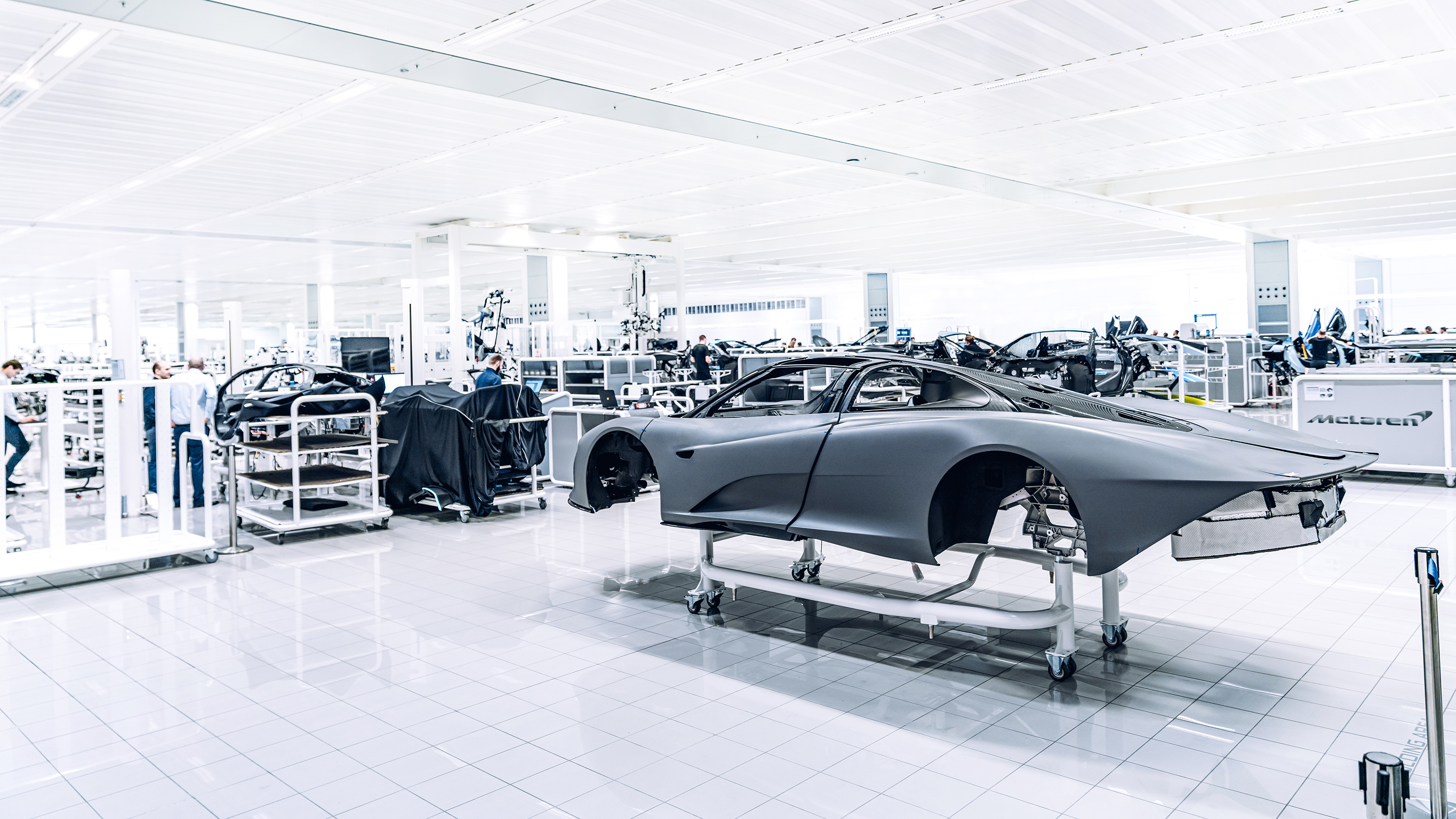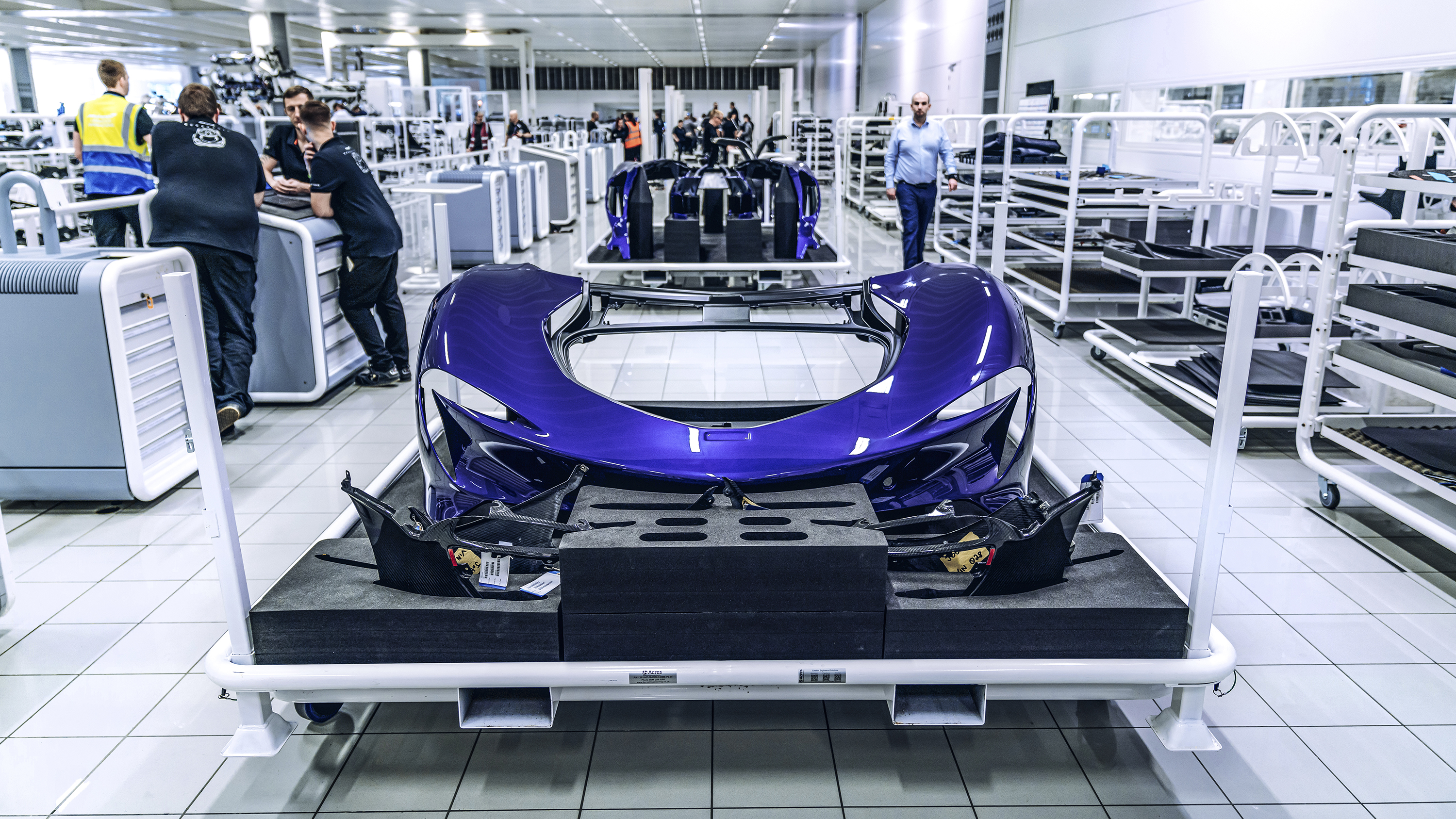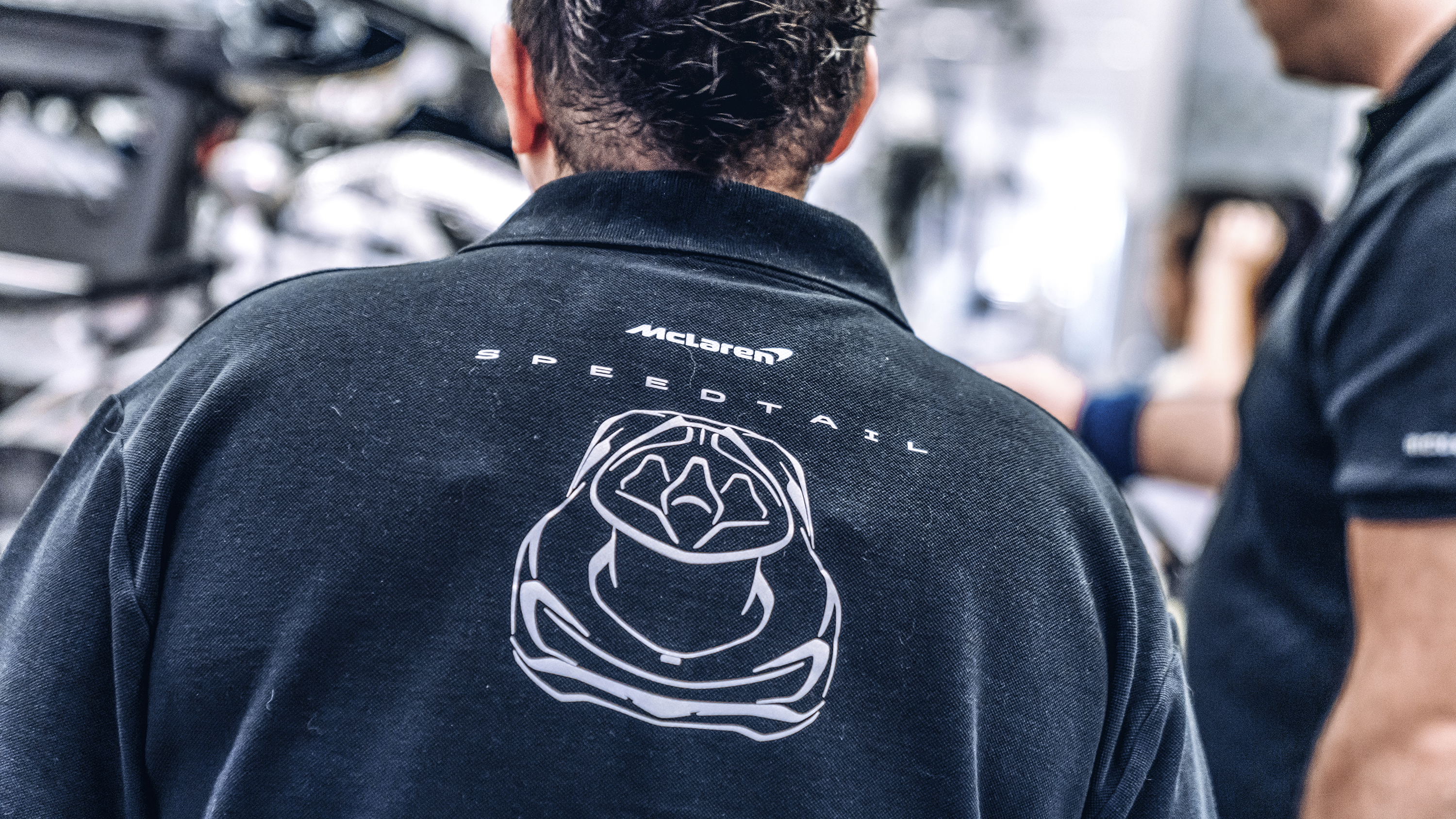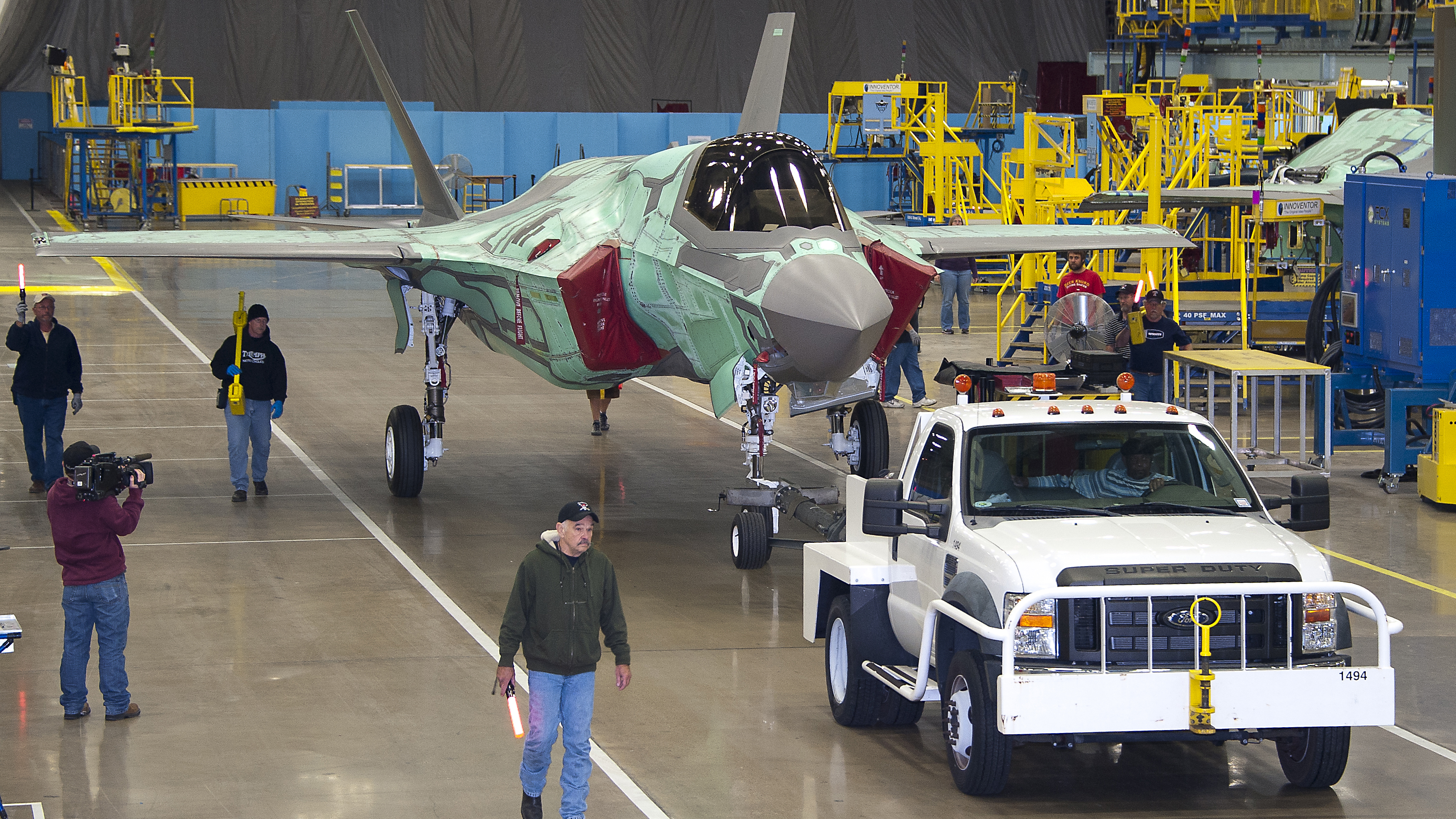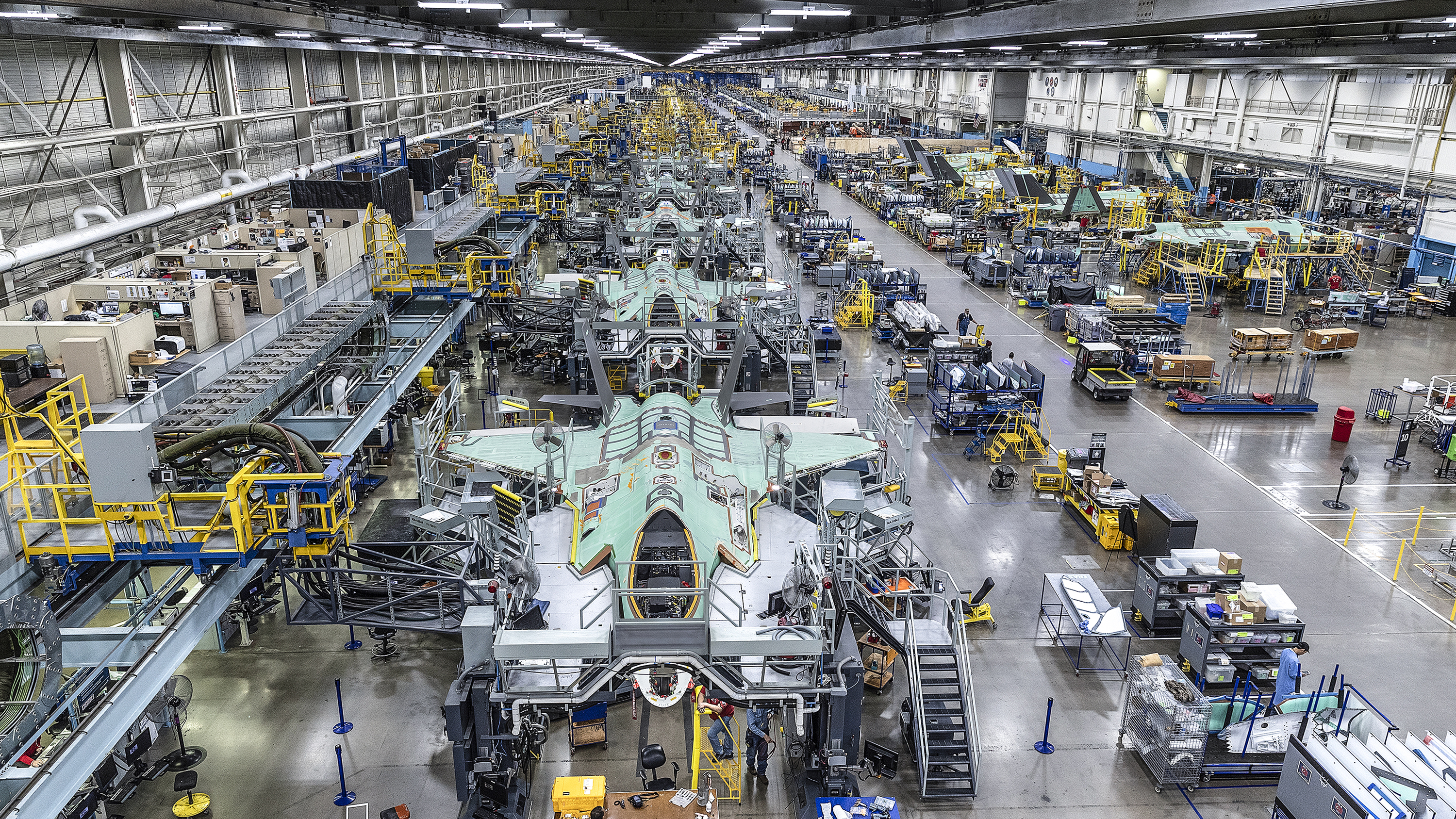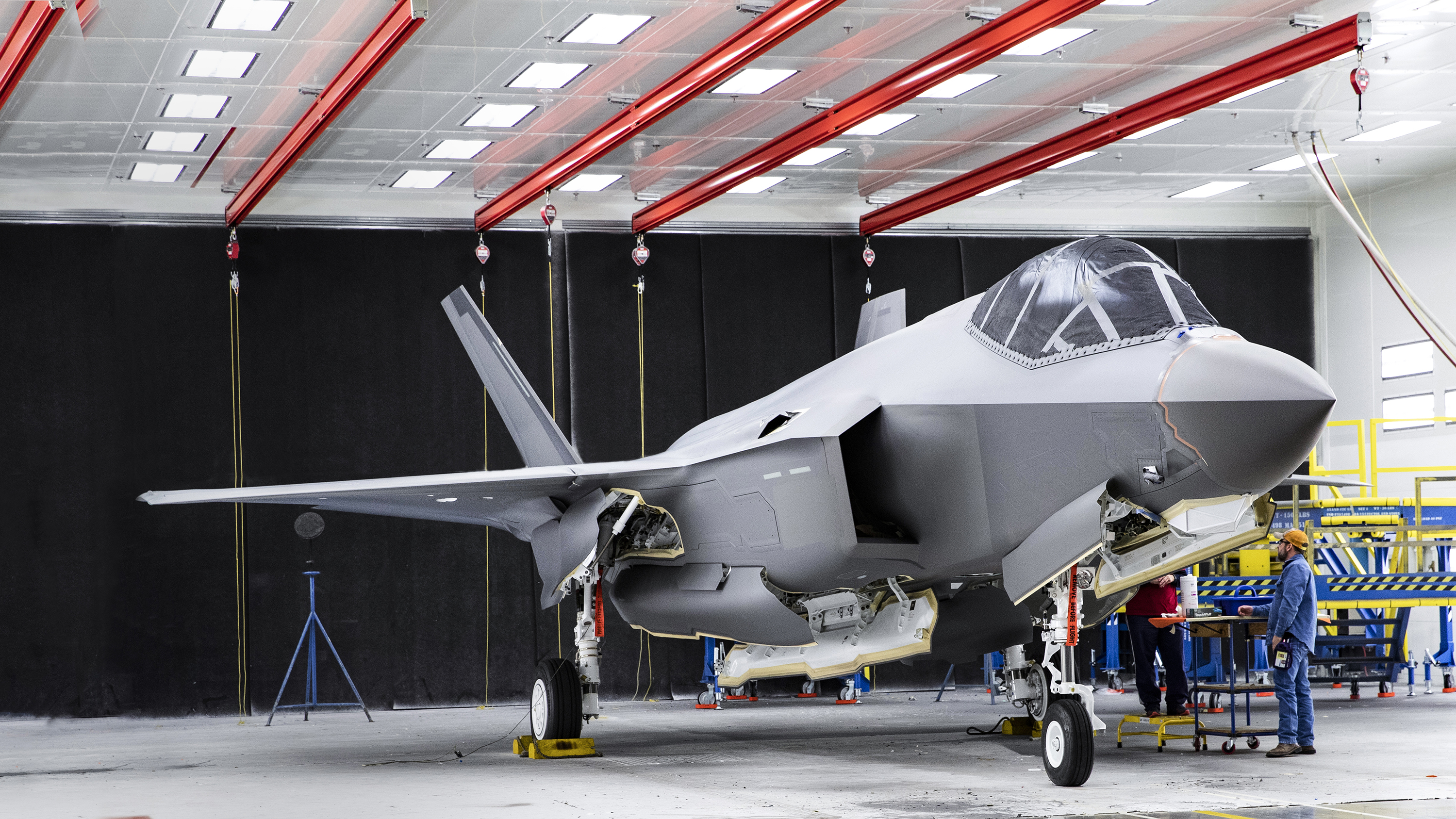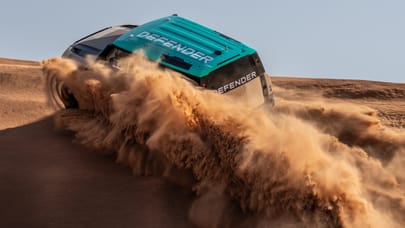
F-35 vs Speedtail: the rematch
An F-35 jet beats the McLaren Speedtail around a track, but what about down the production line?
Warrrrrggghhhhhhhh. The now unmistakable sound of a Lockheed Martin F-35 Lightning II briefly causes Steve – my tour guide – to raise his voice, but its startling acceleration means he quickly reverts to normal volume. The occasional, mightily short take-off is the only intrusive noise as we traverse the F-35’s factory in Fort Worth, Texas, on the back of a golf buggy. It’s otherwise as hushed and calm as a Sunday evening of tai chi.
Two weeks and 4,756 miles later in Woking, Surrey, a 4.0-litre V8 burbles into life and stunts the flow of conversation on the McLaren Speedtail production line with all the drama of a muted cough in a church service. The composure of the environments in which two of the quickest, most gobsmacking machines on earth are produced is astounding.
Words: Stephen Dobie // Photography: Mark Riccioni and Lockheed Martin

Appropriate, you could argue. As their pilots respectively approach 1,200mph and 250mph vmaxes, they too probably need a touch of composure, and likely expect plenty of it from the people who’ve bolted together the materials they’re hanging on to.
You’ve likely seen the race between the two vehicles on TGTV by now, in which the F-35 proved victorious. Play the same race out on their production lines and it’s fair to say the Speedtail reverses the result beyond a whitewash, its 7.5-day production process just a wee bit swifter than the jet’s 18 months. By the time one of the Royal Air Force’s new F-35 Bs has had its final lick of murky camo paint, McLaren will have announced another 27 cars. Perhaps more.
Time differences aside, though, there are a frankly dizzying number of parallels between how Lockheed Martin and McLaren turn a few crates of components into two of the most remarkable objects currently on sale (at £1.75m and £100m apiece, though I’ll leave you to decipher which is which).
At the broadest level, both make their way down pulsed production lines. There’s more technology and precious materials than you’ll find in a Qashqai or Astra, so rather than travel along ever-rolling conveyor belts as robots bolt things on at disorientating speed, these sit in specialised stations for fixed time periods before being passed along to their next stage of production when the countdown stops, like a higher-stakes version of pass the parcel. The Speedtail makes its way through 10 stations, each one pulsed every 0.75 days, while the F-35 pulses every 1.8 days and visits 37 stations alone for the wing systems (fuel lines and the like).

“We’re not high volume,” says Steve Over, Director of F-35 International Business Development as well as today’s able buggy driver. “We learned from Toyota about quick mass production – keeping the product moving. Yet it’s not tangible movement, it’s not the constant buzz of a car factory. It’s more like the tick of the metronome.” A screen informs us it’s a yawning 35 hours, 26 minutes – more than four shifts – until the line pulses again.
McLaren doesn’t operate all 10 stations at once, instead five Speedtails sit on the line, in either odd- or even-numbered slots, allowing a less frazzled handover between stations. I’ve visited the Bond villain-esque McLaren Technology Centre (MTC) before to witness the 570S and 720S being meticulously assembled. This is like watching a gratuitously slow-motion video of the same process.
“Each operator does three to four hours of work here for every 32 minutes of work there,” says Alex Gibson, Programme Manager of Ultimate Series, as he compares the Ultimate and Sports Series lines. “They do 20 cars per day, we do three per week. We have specially selected guys on this line. It’s grown from the first car that ran down here – the P1. There are specific skills we need on the Speedtail, such as the high voltage for the hybrid system: this is the first stage of transitioning MTC into a high voltage facility.” A safety hook on the wall, like those you see in the Formula E pitlane, visibly backs him up.
Both car and jet have been chiselled into their current forms by the needs of aerodynamic and weight saving requirements, with intricate carbon weaves at the core of many of their panels, while both have a jaw-dropping trick up their sleeve, neatly concealed by their smooth bodies.
Top Gear
Newsletter
Thank you for subscribing to our newsletter. Look out for your regular round-up of news, reviews and offers in your inbox.
Get all the latest news, reviews and exclusives, direct to your inbox.
The Speedtail's concerns its rear spoiler, created by a flexing carbon surface at the tip of its elongated rump, a beautifully machined aluminium mechanism tucked invisibly beneath and linked to the gearbox so that it shifts the car’s aero profile in accordance with the speed you’re travelling. The device has had all of its non-structural material chiselled out to save more grammes, and is geek porn at its best.
Its stateside equivalent is the vertical take off and landing (VTOL) system fitted to the B variant of the F-35, which the British forces have snapped up for use on their new breed of aircraft carriers.
See, the Lightning is as stealthy as fighter jets get. But to achieve this, it needs as few creases and inconsistencies on its surface as possible. So all of its weapons are kept within its radar-deflecting skin, as is the 29,000 horsepower lift fan that allows the RAF’s jets to demonstrate their mesmerising hovering trick. Supplied by Rolls- Royce, it’s among 15 per cent of the F-35’s components originating in the UK, and our unique length of carriers have helped innovate exactly how the 18,000lb of cold air thrust from the fan up front and 18,000lb of hot gas pumped out by an exhaust nozzle at the rear manoeuvre the plane. The space left vacant on the F-35 A, which lacks VTOL equipment, holds another pair of air-to-surface missiles and swallows another 2.2 tons of fuel, doubling its sortie endurance.

But there are reassuring signs of normality, so just as the blood running through my brain reaches bubbling point trying to compute some of the wilder stats, there’s a glimpse of the everyday that I can grasp. In Texas, pedalled rickshaws perch near the Lightning’s build stations to efficiently – and quietly – move parts around the factory. Back in leafy Surrey, Henry the Hoover’s plugged in and ready to keep McLaren’s Ultimate line free of dust. In their respective paint shops, there’s masking over the F-35’s key sensors and the Speedtail’s exposed carbon areas, protecting them from paint guns with seemingly little more sophistication than the tape you stick around the sockets and light switches when you’re decorating the walls at home. These are brief interludes in the boggling of my mind, though.
And it’s over in Texas where my poor little head takes its biggest pummelling, with every sentence tumbling out of Steve Over’s mouth Top Trumping the last. Perhaps my favourite concerns the factory floor. Fort Worth’s roots lie in World War II, when it was built to the same spec as plants in Michigan and Oklahoma, each with a mile-long production line. Except that wasn’t good enough for the Texans, who craved bragging rights and pulled together the cash to build theirs 25 feet longer. Willy waving at its finest.
Unlike the Speedtail’s line – a neat, cordoned off section of a wider factory, its appearance akin to the VIP area of the world’s brightest, most hushed nightclub – the F-35’s is discombobulatingly large. I lose all sense of scale as soon as I learn its length, and simply never regain it. A mile indoors seems way longer than a mile in open air, and not just by those additional 25 feet. When we approach the end of the line, and the end of our tour – as fuselage and wings finally mate and the whole thing actually resembles an ‘airplane’ – I marvel at the size of the first we pass, a 68 per cent complete Lightning according to its countdown screen.
Then I see another in front of it. And another. And another. I suddenly realise there’s upwards of 20 of the things surrounding us, all of a sudden dwarfed by the building housing them like they’re Kinder Egg treats marooned in a regular toy box. It’s not until I wander around one sitting pretty in ‘cloudy day grey’ in the paint shop that I remember F-35s are sodding massive.
What happens next, though, Top Trumps everything before it. Just as each one of the 106 Speedtails that rolls out of Woking will sojourn to Millbrook Proving Ground for final validation at speed, so every F-35 B will endure three test flights out of Fort Worth’s airbase, each an hour-long ‘fly around the block’ to ensure none of the ground checks were fluffed. Enough jets are pumped out of the factory door to make ‘Test Pilot’ a full-time job, one requiring a whole heap of extra training on top of any military experience to give those onboard the requisite skill set for identifying issues.
“You can help disprove one of the urban legends,” smiles Steve as the factory’s latest deposit U-turns at the end of the runway ready for flight, “that an F-35 engine is so loud it shatters eardrums.” Warrrrrggghhhhhhhh. As it ascends, bluey orange heat haze punctuating its gunmetal profile, I can confirm my ears still function. And that peace has once again returned to the mind-bending factory floor behind us.
Trending this week
- Car Review
BMW 1 Series
- Top Gear's Top 9
Nine dreadful bits of 'homeware' made by carmakers







